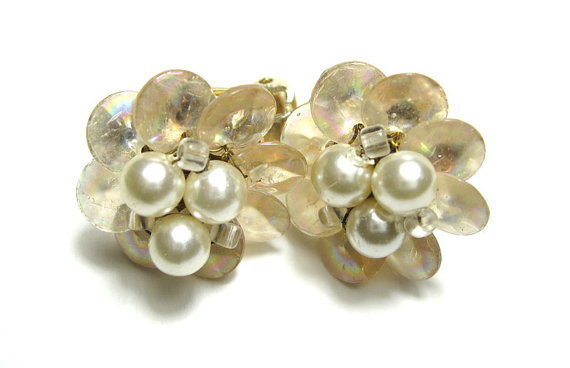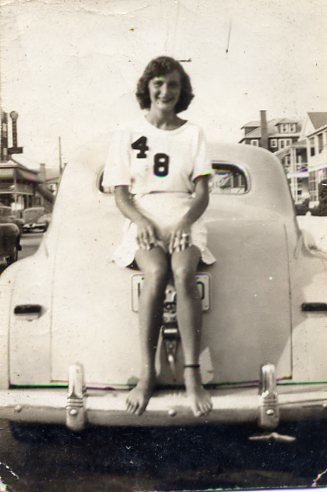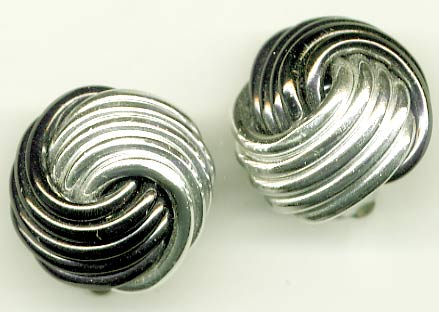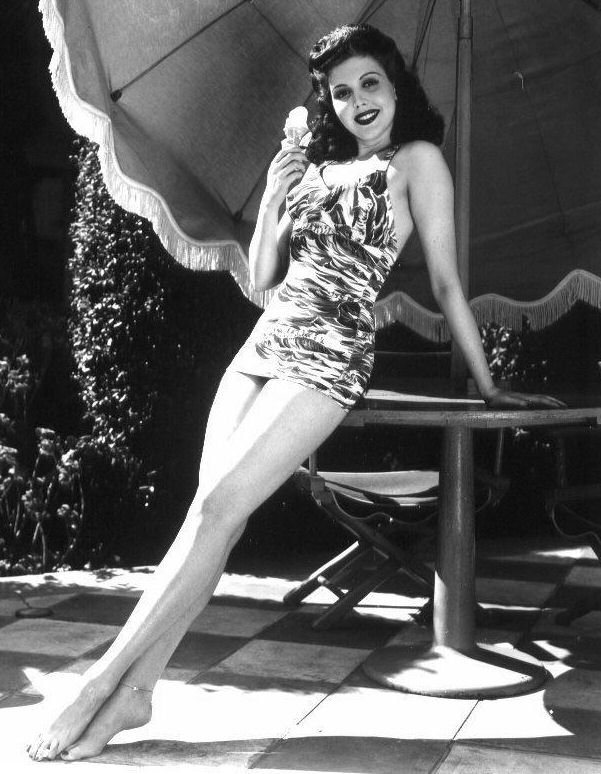Both of my grandmothers were good with their hands, made and designed their own clothes, taught us all to love art and craft, and pulled their families through rough times by mixing all that with some entrepreneurial instinct. One of the results was a profitable little jewelry business.
This is not the story of a Park Avenue jewelry trade handed down through the generations. My mom’s family business began on a towel on the boardwalk in Ocean City, Maryland, in the summer of 1945. It didn’t make it much farther than that. After shopkeepers claimed they were taking business away, my grandmother rented a booth nearby at Jackson’s Casino, with an open-air counter facing the boardwalk. My mother, uncle and grandmother worked the counter in four-hour shifts, so everyone had time to play.
Humble as this setup was, my mother’s third of the profits helped put her through college. My grandmother’s third covered the cost of their rent and overhead for six summers. I’m not sure what my uncle’s third covered but I suspect it was something fun and totally impractical.
Can you imagine doing that today on what you’d make in a few summers selling costume jewelry on Etsy? Oh, what my grandmother could have accomplished if the internet had been around back then.
It was my mom who started the whole thing when she was 13 by weaving and wearing what she calls “sharkskin” ankle bracelets from the cord people used to catch crabs in the bay. As you can see by the photo (above) she was her own walking advertisement – those legs. People started asking her to make them an ankle bracelet. She always asked if they were spoken for. If they were, she tied the bracelet to the left ankle to indicate off-limits. She says everyone recognized this code at the time. She wore hers on the left ankle. So did my father.
Her brother convinced her to charge for the ankle bracelets, then began helping her so he could score some pocket change too. They figured out how to weave more intricate bracelets and began charging more. They would put in a couple hours, then wander off to blow their profits in the boardwalk shops and eateries.
Their jewelry was beach wear, costume jewelry, the kind of trendy throw-away stuff a teen like my mom could conjure up. Who has their finger on the pulse of cheap chic like a girl who spends her summers at the beach? My mother got so good at making bracelets, she would read a book while weaving them – a little trick that attracted its own crowd. She says it was fun strolling the boardwalk and watching their jewelry walk by on the women they passed.
This little fad would have come and gone like a summer breeze if my grandmother hadn’t spotted the potential and stepped in. My grandmother had sold children’s clothes door to door and taken in boarders to help the family through the Depression. She knew how to run a small business was always looking for what we would now call her next startup. She refined the ankle bracelets by adding manufactured findings and expanded their jewelry into a couple distinct collections. When boardwalk shopkeepers started complaining about the crowd around their towel display, my grandmother rented a booth.
I spent part of my own summers on the same beach and boardwalk, staying with my grandmother in the house she now owned. She taught me to make the kind of jewelry she once made with my mother. When my sister and I were little, she would set us up at her kitchen table so we could sift through the bits and pieces she’d accumulated in her shoe boxes. She showed us how to put it all together and make it wearable, using the cheap metal pin and screw-back findings she’d stashed decades earlier. I can still make tiny roses out of clay, thanks to her, and earring-size flowers out of iridescent bits of shell.
 These screw-back earrings from the 1940s are similar to the ones my grandmother used to make.
These screw-back earrings from the 1940s are similar to the ones my grandmother used to make.
Those floral pieces were part of my grandmother’s contribution to the jewelry she sold with her children in the years following WWII, and would have been very much in fashion then. But they weren’t the core. The moneymaker was jewelry made from woven, plastic-coated cord, 1/8″ thick, something my mother refers to as “kemp.” By the time their jewelry business was in full swing, this included knot-style earrings, woven necklaces, brooches, barrettes, and cuff bracelets. Necklaces and earrings sold for $2.50.
When I was growing up, my mom had samples of all of it in her jewelry box, which I pillaged regularly – so often, I can still see and smell what appeared when the lid flipped open: a treasure trove of Retro costume jewels. The woven plastic was the color of the forties – deep maroon, brownish-gold. Some of the earrings were in this classic ’40s knot style:
Alas, it’s all gone now, all the remnants of the design collaboration between my mother and grandmother. (Not that either of them ever used terms like design or collaboration.) My mom says the jewelry eventually disintegrated, not being designed to last, but I think some of it she probably tossed during many moves.
What’s funny to me now is that I had been writing about jewelry for 15 years before it ever occurred to me that this legacy had anything to do with my own fascination. Lately, I’ve been relentlessly questioning my mother about her boardwalk jewelry-hawking days. The jewelry itself may be gone but the role it played is part of our history and, in a way, part of mid-century American history. What’s more American than the boardwalk?!
Here’s Ann Miller, demonstrating the wartime craze for ankle bracelets – worn for the same reason they’re worn today: to show off a nice set of gams. I may be prejudiced but I don’t think Ann Miller had anything over my mom when it came to rocking the ankle bracelet, even with a T-shirt in place of the glam swimsuit and braided sharkskin cord instead of a diamond on a gold chain. Good beach jewelry is sporty, fun, and casual.
So, this one is for my mom, her mom, and crafty women everywhere. To the summers of our youth. And to the ability to earn a living – or at least a summer on the beach – doing something you love!
Related posts:
Flights of fancy: Bakelite bangles
Women who paved the way: Elsa Schiaparelli




